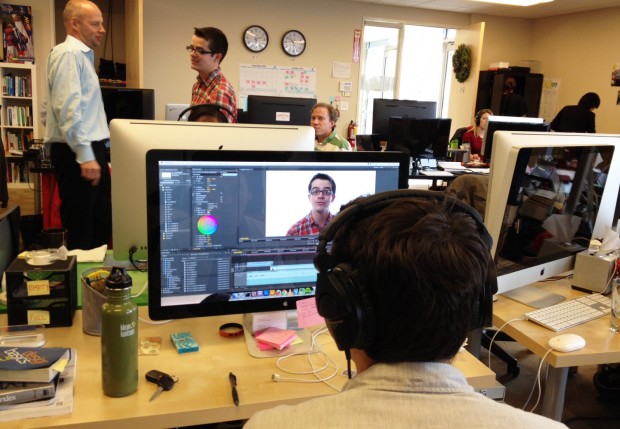
Less than 10 percent of MOOC students, on average, complete a course. That's the conclusion of Katy Jordan of Open University, who published her analysis, pulled together from available data of some Massively Open Online Courses, or MOOCs.
But do completion rates matter?
It's not that course completion rates don't inform observers about the nature of MOOCs, said Michelle Rhee-Weise, who follows higher-ed developments in online and blended learning as an education senior research fellow for the Clayton Christensen Institute for Disruptive Innovation (formerly Innosight Institute). But with no negative academic consequences from dropping out, that information is less about the effectiveness of the courses themselves, and more about the reasons people might be enrolling, she said.
Among those reasons:
- 1. Just because MOOCs give free access to higher education courses doesn't mean their work is being ignored by the for-profit sector of an online learning industry estimated to be worth hundreds of millions of dollars, Rhee-Weise said. That can make MOOCs a fruitful observation ground for those who are looking for ideas to infuse into their own online learning efforts.
- 2. “If you just think about the openness of these platforms, there are people who just want to see what's going on, see how others teach the same subjects they do, as well as competitors who might want to steal some ideas and use them in their own platforms,” said Rhee-Weise, who said she has enrolled in a handful of MOOCs for research purposes without intentions of completing them.
- 3. There is a range of data that shows students enrolled in MOOCs and in other online post-secondary courses skew far older than the traditional on-campus college student. In online degree programs, that phenomenon often relates to professionals looking to change careers, get promoted within their current one with the attainment of an additional degree, or merely weave new skills into their work.
- 4. While MOOCs can't offer the promise of automatic promotion that degree programs can provide, they can offer a much lower-risk path to new workplace skills. Some students might lift specific skills out of courses without following through to completion. Meanwhile, Rhee-Weise questioned whether those who were completing MOOCs had been given any direct career incentive.
- 5. “Are they boosting their CV? Are they changing their career track?” Rhee-Weise said. “I would love to know how this is tracking and helping in some way with employment. … It seems like a way in which we could blur the gap between unemployed college graduates and unfilled employment opportunities.”
- 6. Low completion rates may actually point to students enrolling because they recognize the unusual opportunity afforded by MOOCs. Whereas students in traditional college courses likely wouldn't enroll in a course they knew they might fail to complete if they were paying full tuition, the lack of those concerns could stir some to enroll before they consider the full demands of a course.
- 7. And even with severe student dropoffs, the idea of MOOCs serving a wider swath of students than traditional college courses is still authentic, Rhee-Weise said. A small fraction of a courseload of 10,000-30,000 students completing a course still boasts more students than even a large lecture hall on a college campus.
MORE ON THE ANALYSIS

